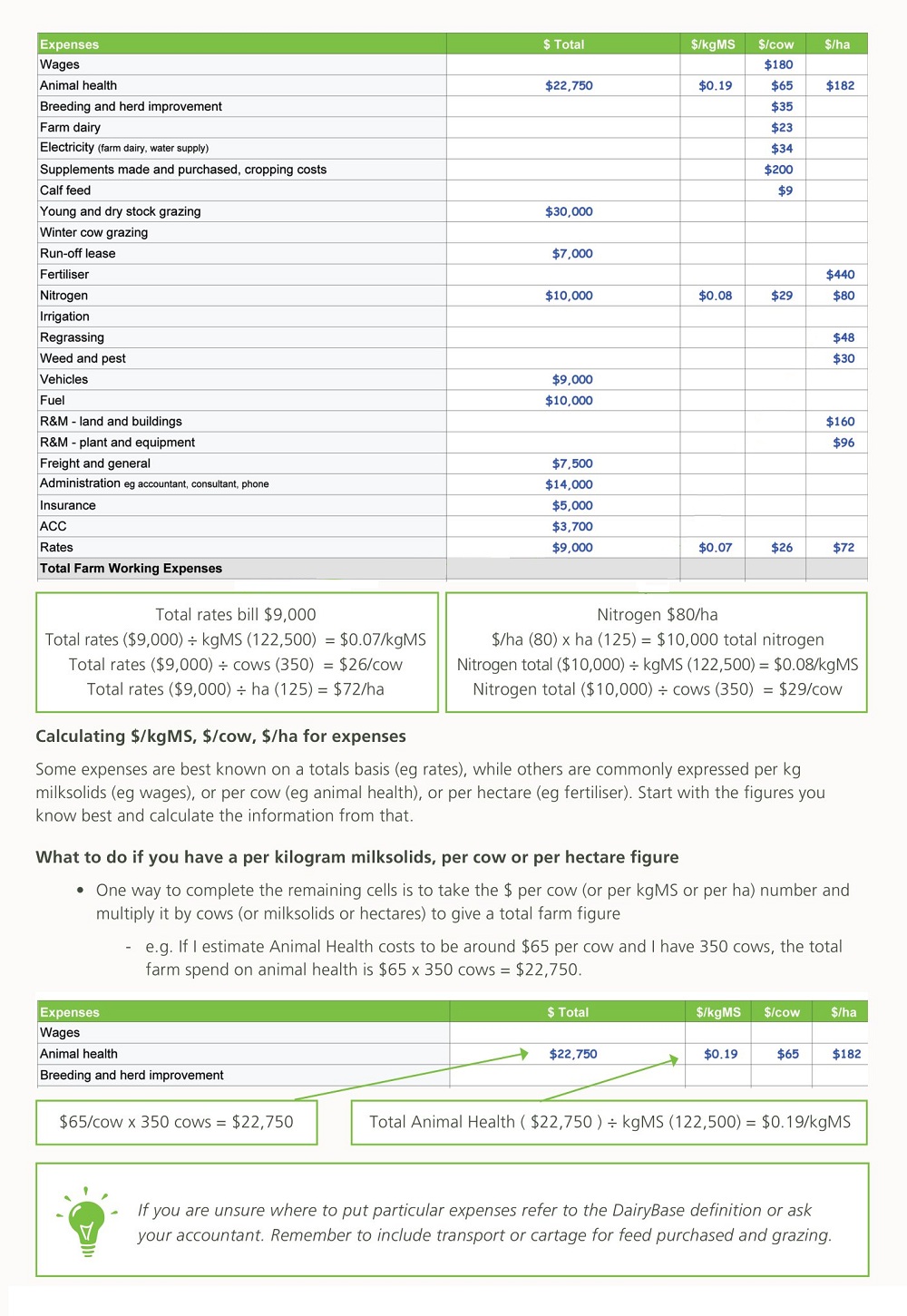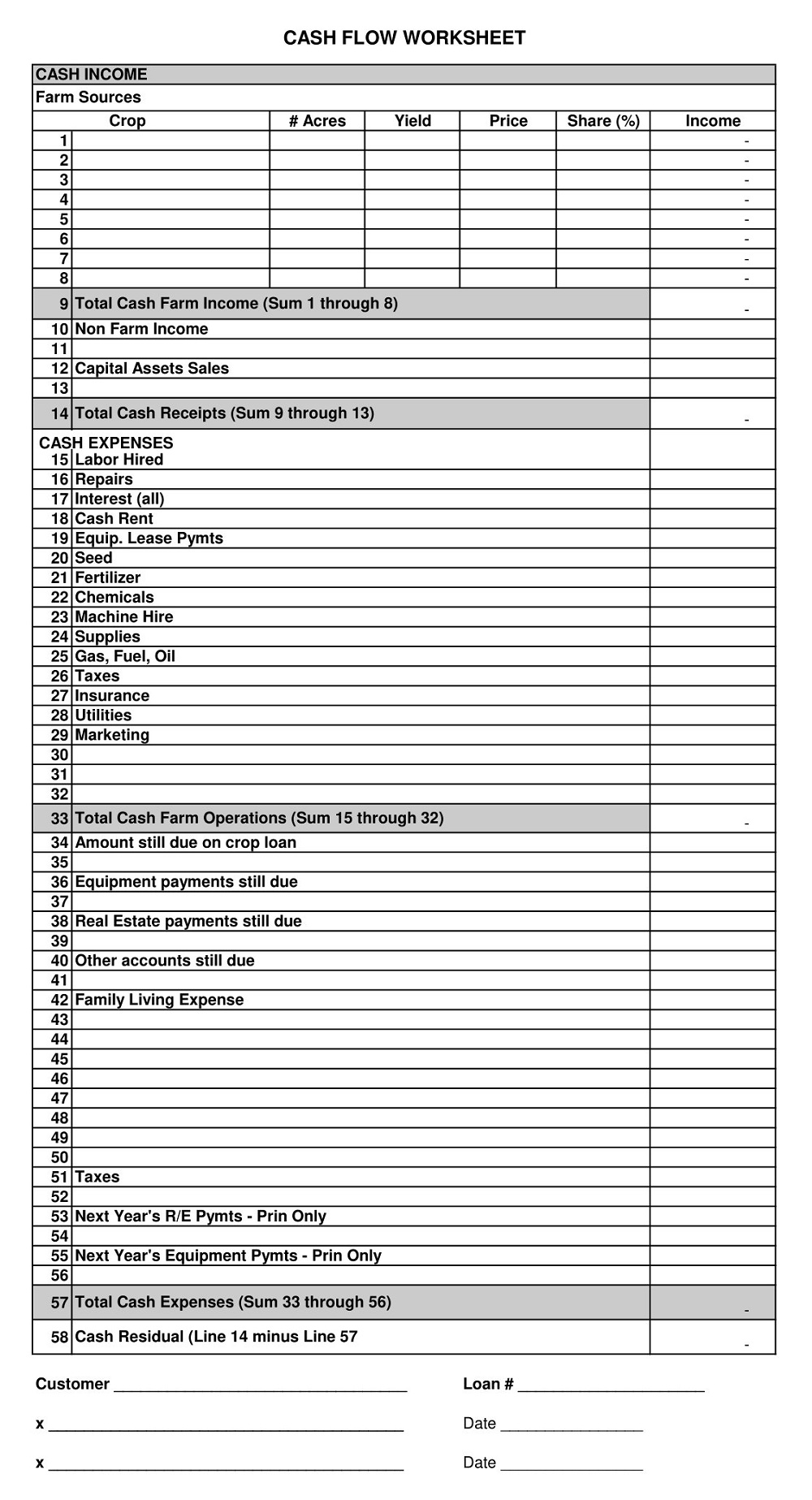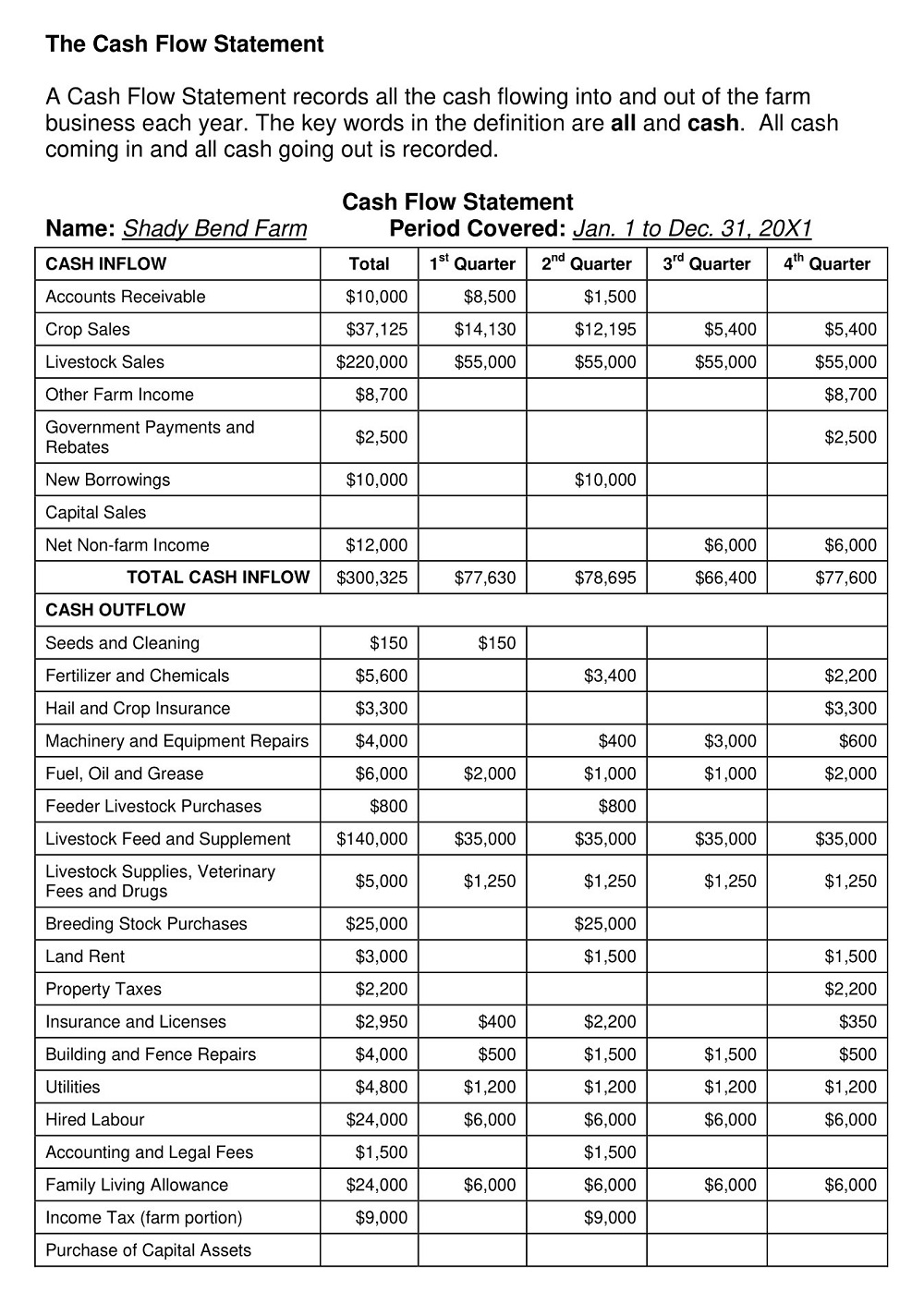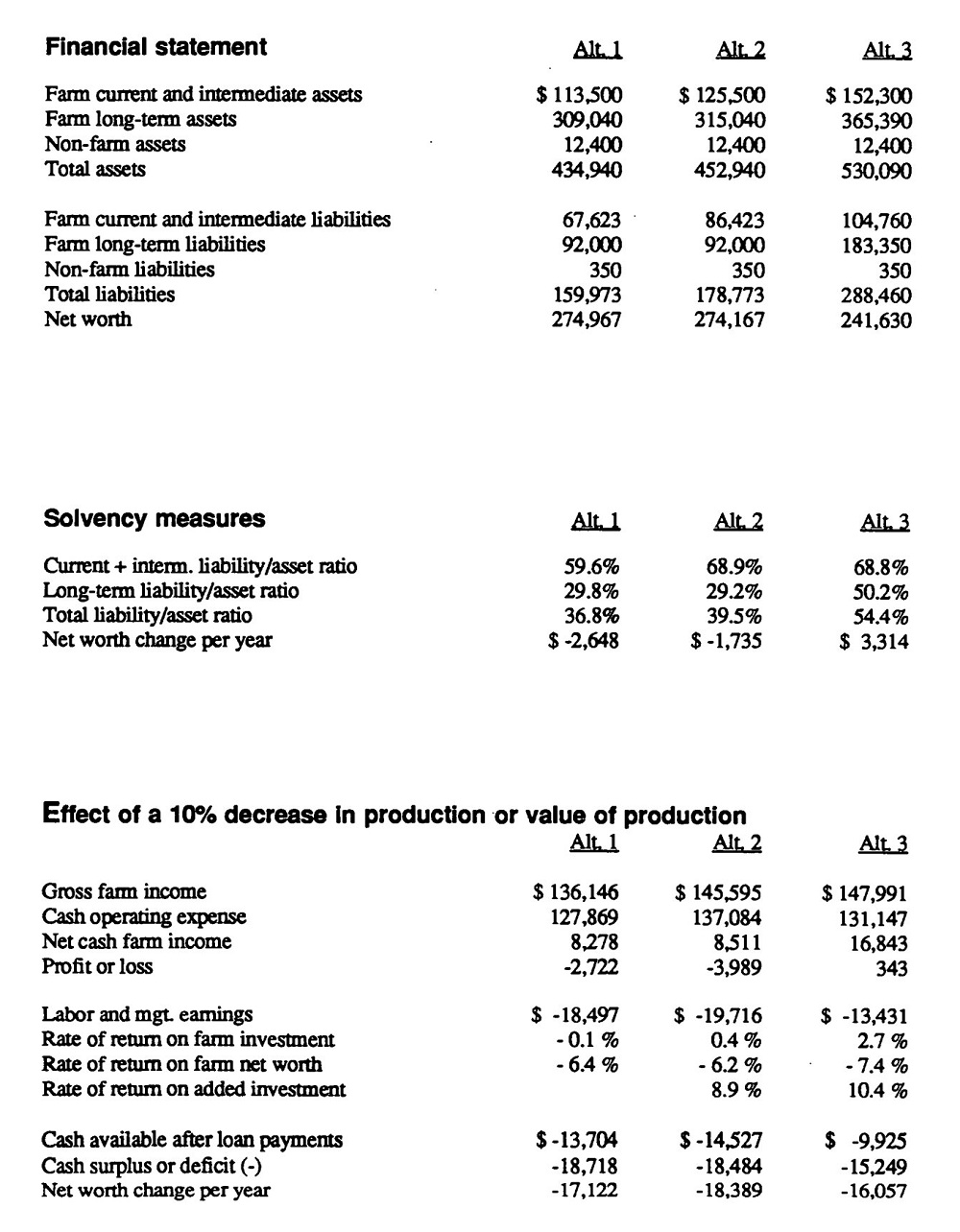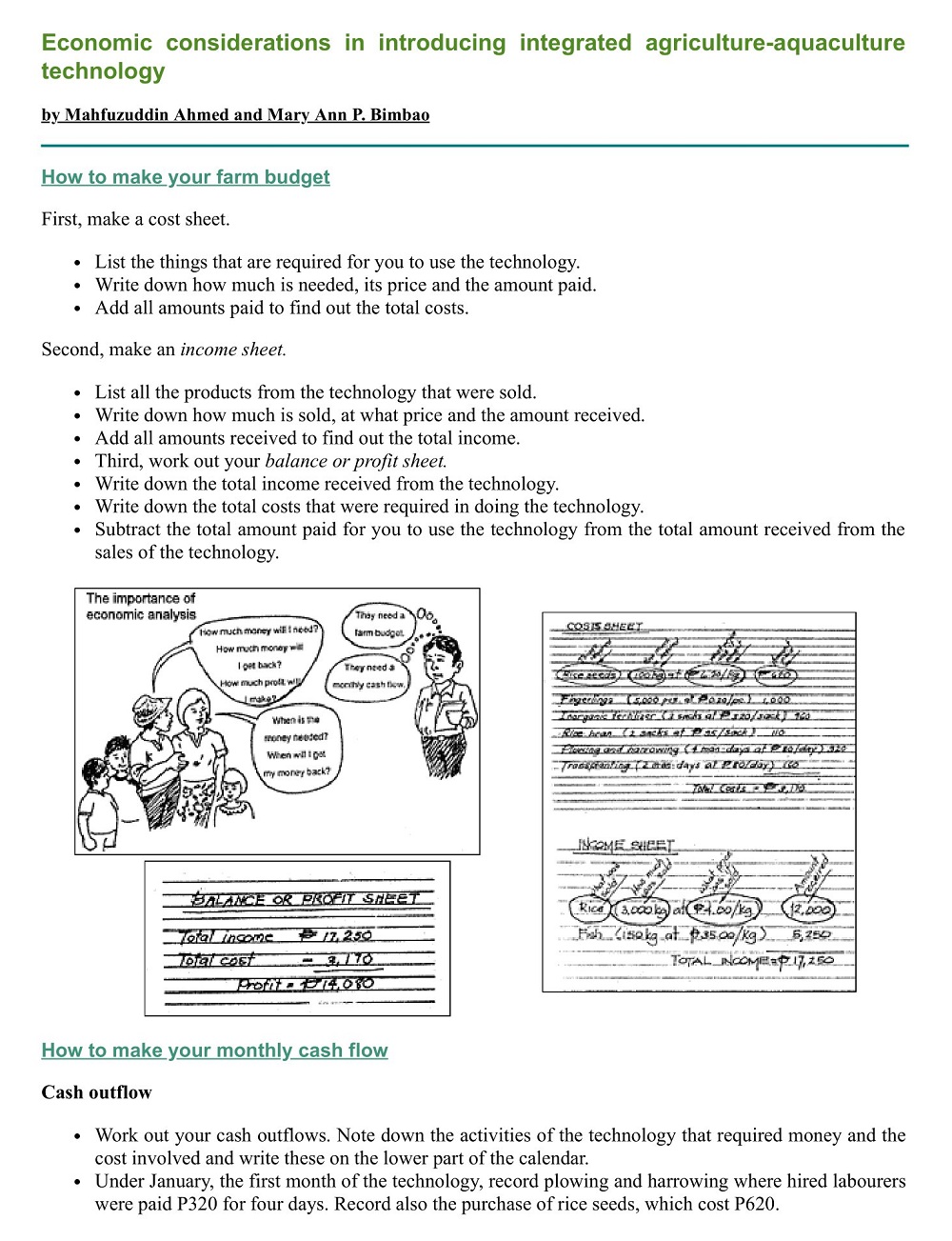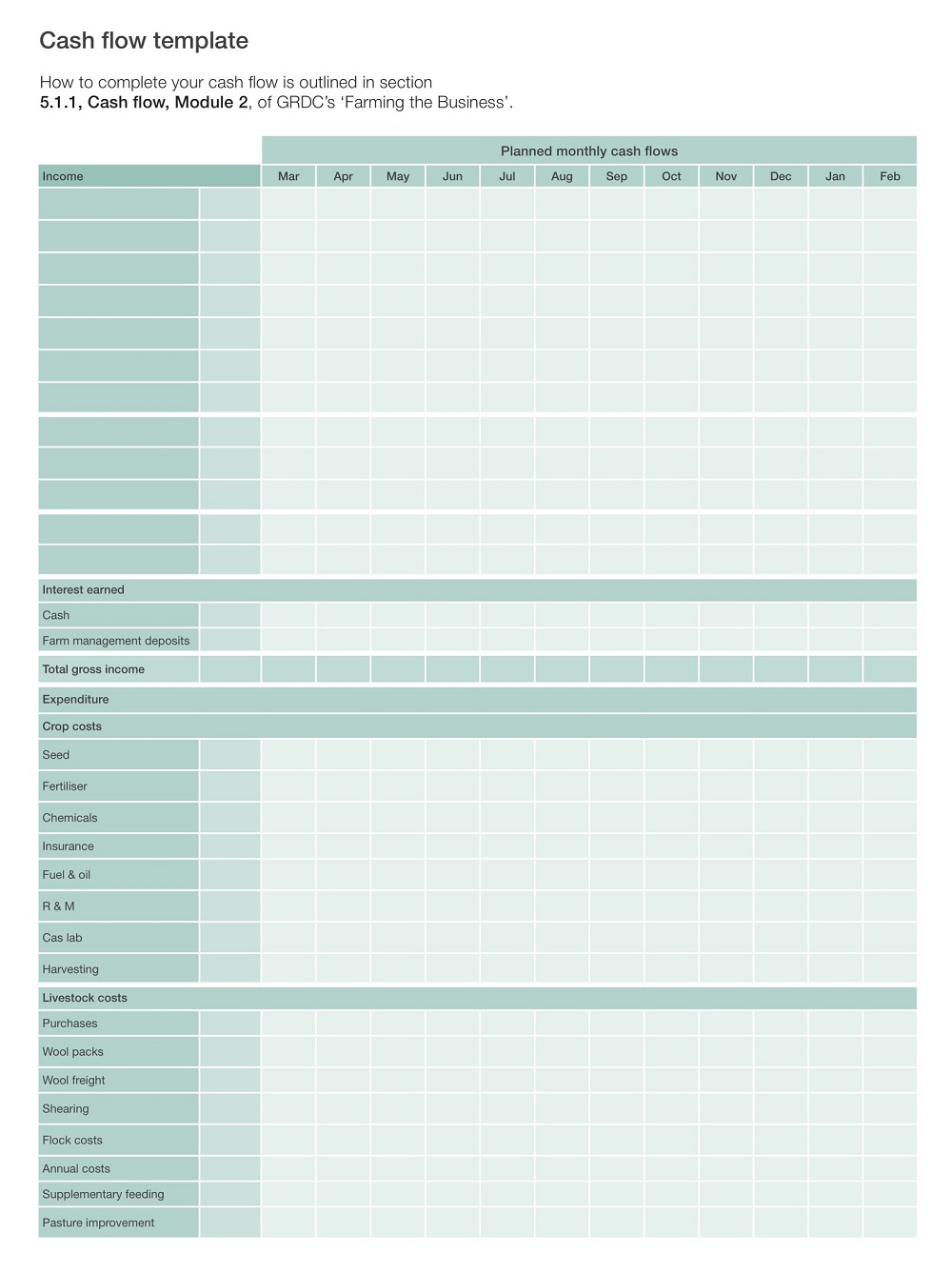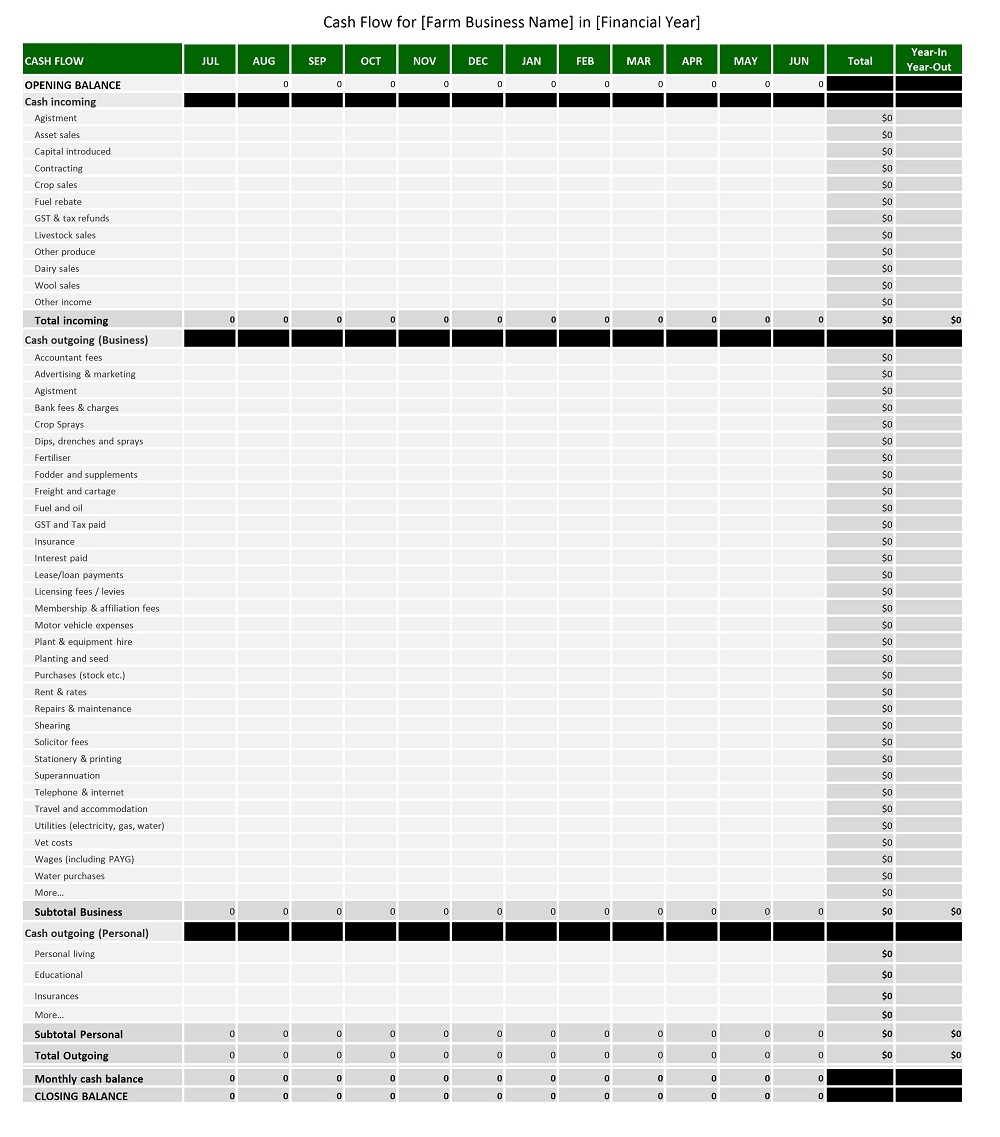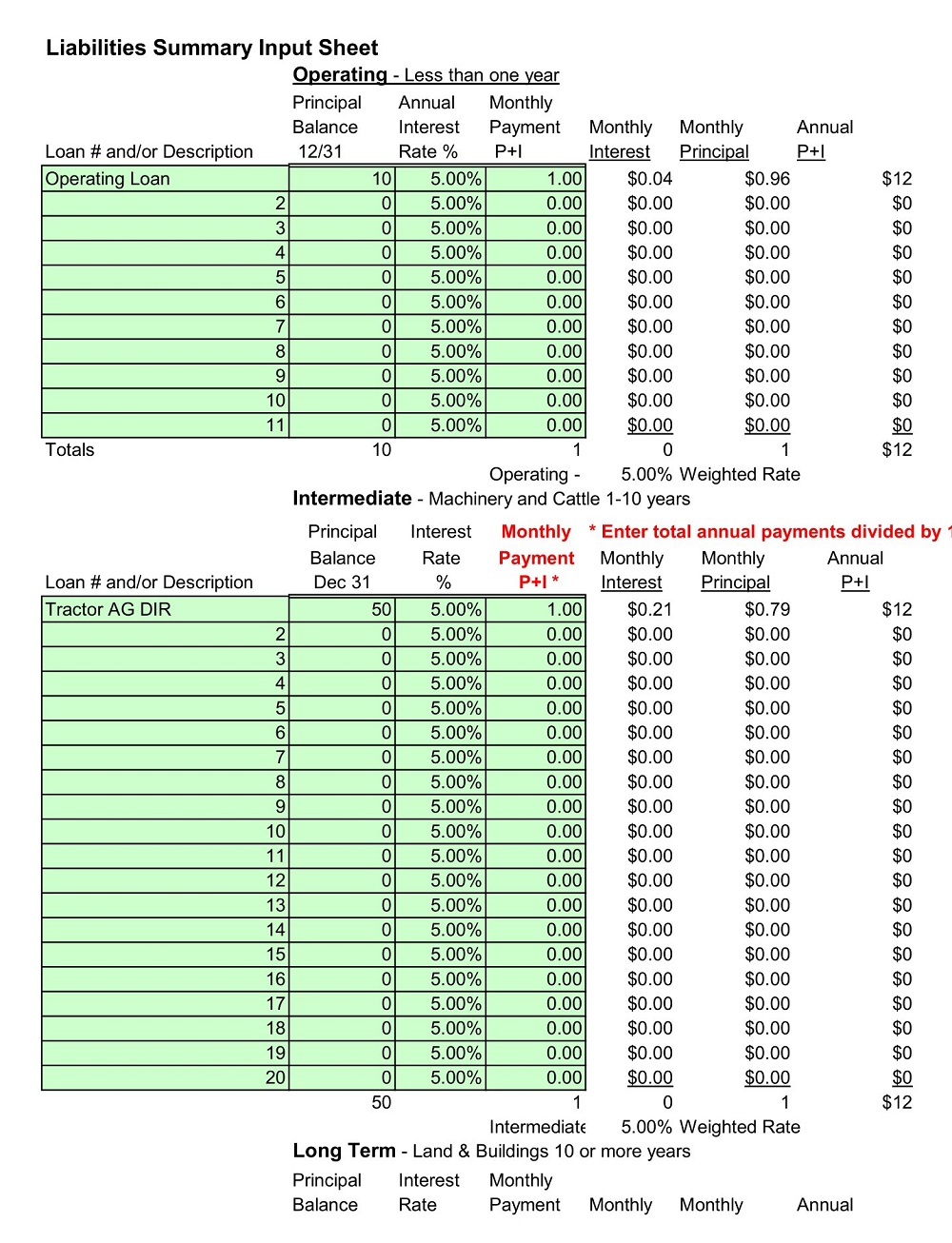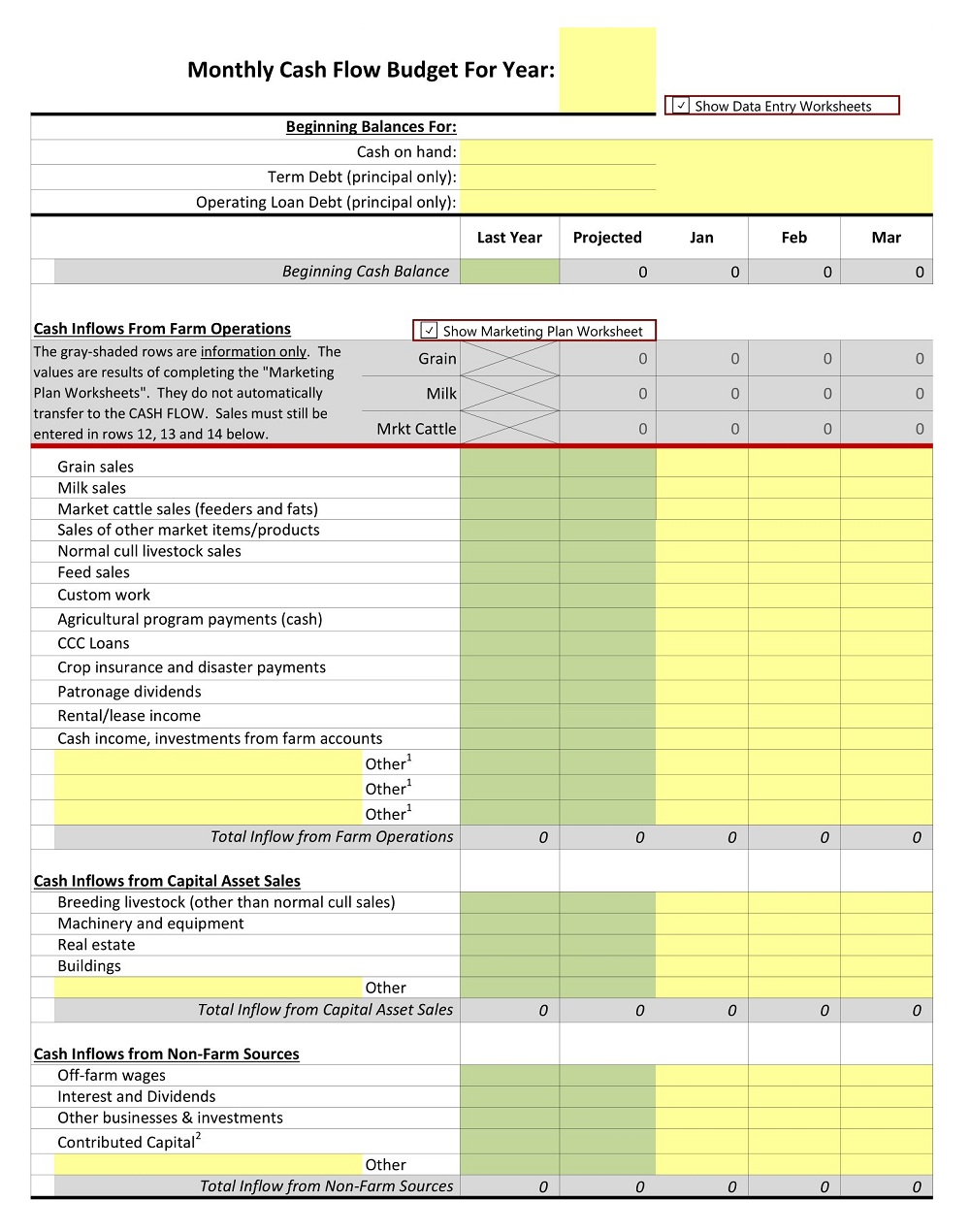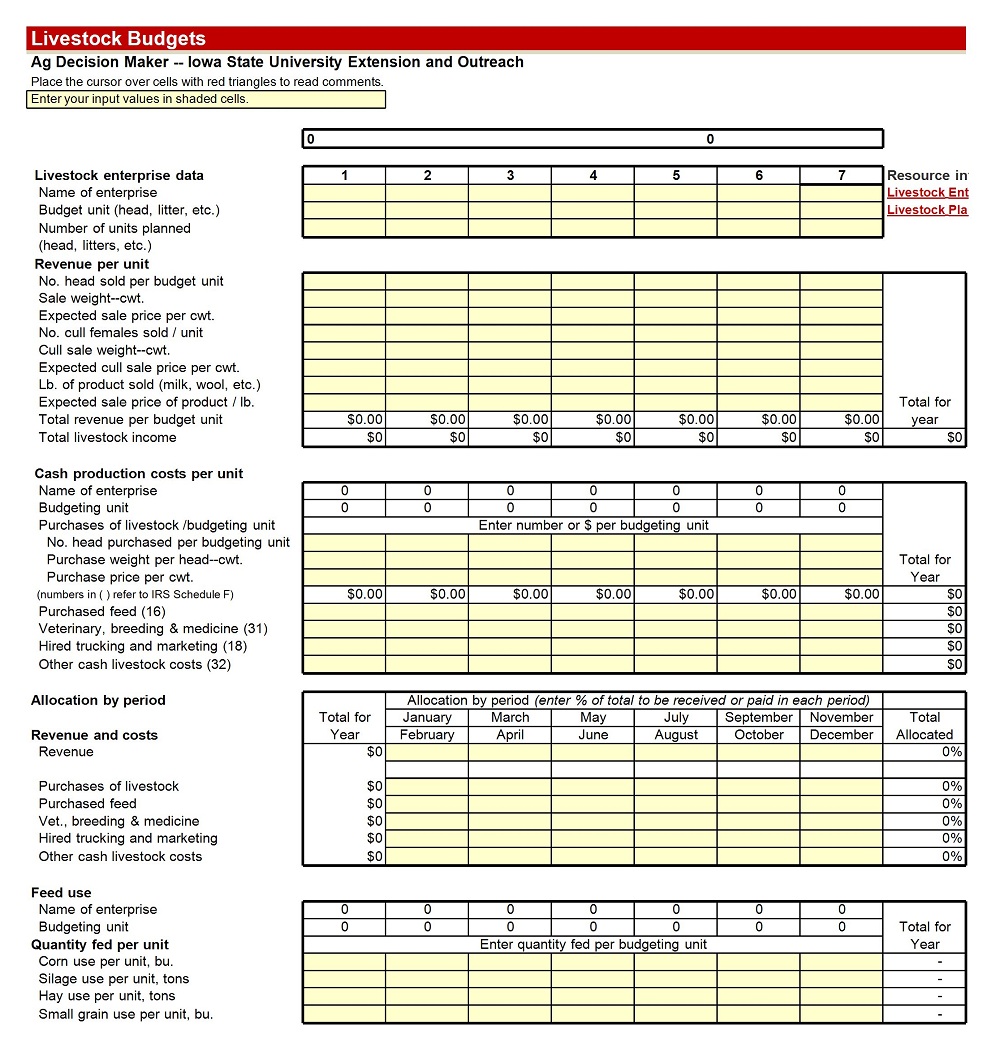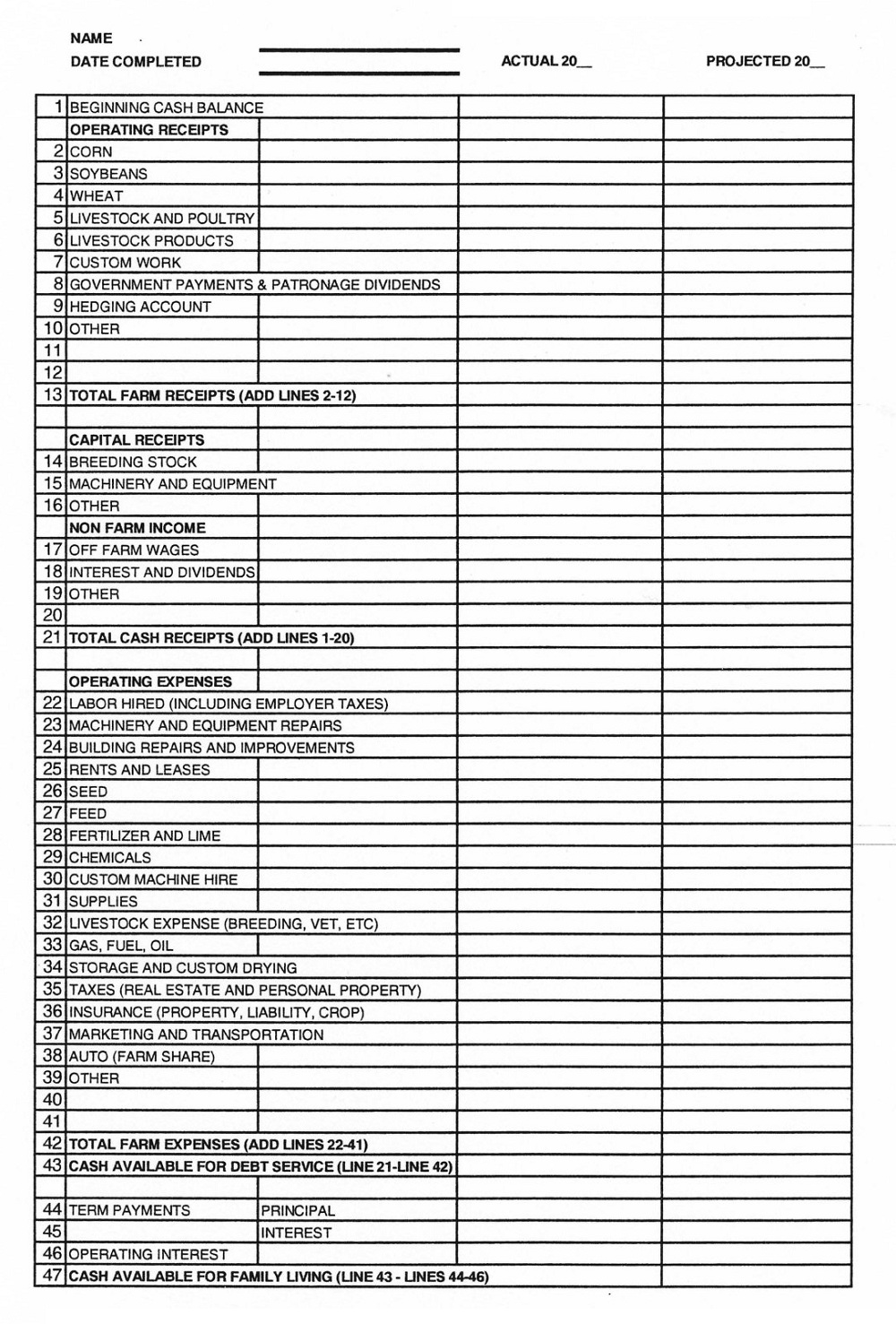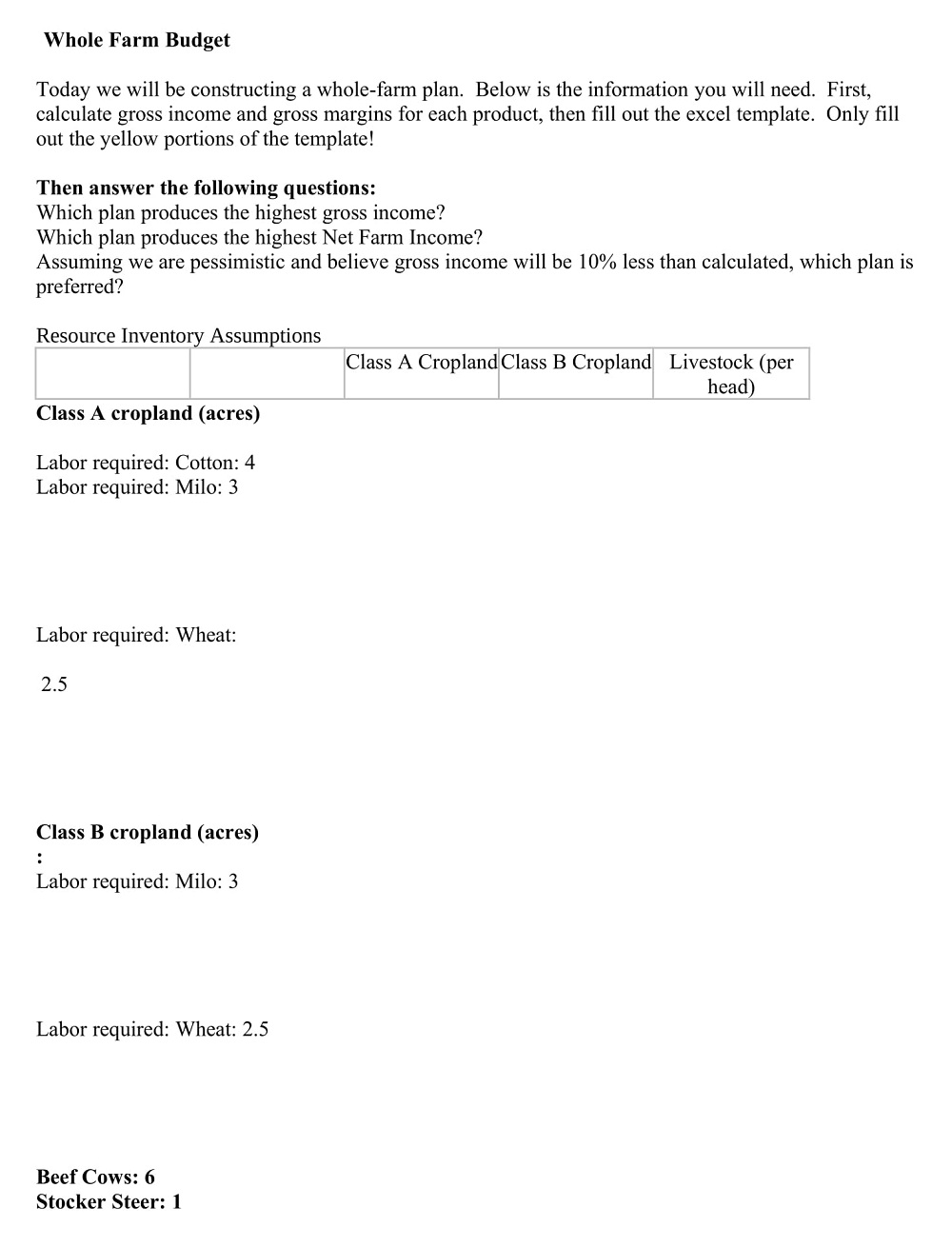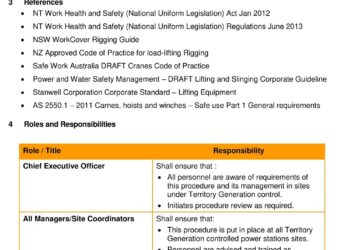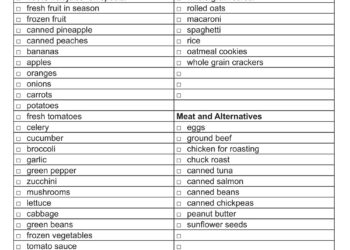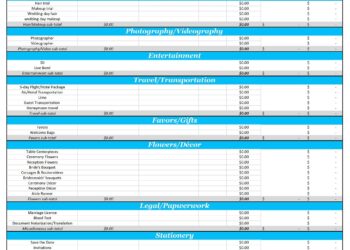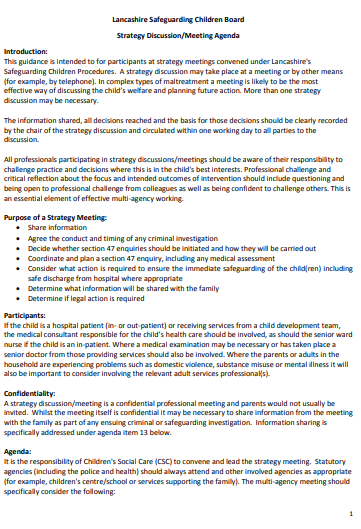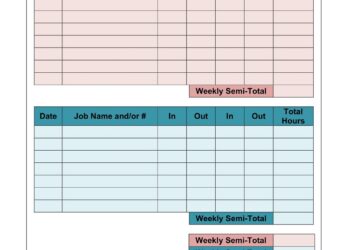Running a farm involves not only hard work and dedication but also effective financial management. It is vital to have a clear understanding of the financial situation and where the money is going, farmers need to closely monitor their income and expenses, and one powerful tool that aids in this process is the farm cash flow budget template. With the help of these free professionally designed templates, farmers can track all sources of income and expenses, including the cost of supplies, equipment, insurance, and wages.
Cash flow budget templates provide a structured framework for planning and tracking financial flows, which can help to make informed decisions and take action to maintain financial stability. Whether you’re a seasoned farmer or just starting a farm cash flow budget can be an indispensable tool to effectively manage your resources. In this article, you’ll find a collection of free Printable Farm Cash Flow Budget Templates and samples in PDF, Word, and Excel format to help you make your farm business successful.
As you meticulously plan the financial aspects of your farming operations with our specialized “Farm Cash Flow Budget Templates,” remember that procurement efficiency plays a vital role in the overall financial health. Explore our comprehensive “Procurement Spreadsheet Templates” to optimize your purchasing processes. Together, they create a seamless financial strategy, ensuring your farm not only flourishes but also operates with efficiency and fiscal responsibility.
Download Free Simple Farm Cash Flow Budget Templates
Annual Farm Cash Budget Template |
Blank Farm Cash Flow Budget Worksheet |
Dairy Cash Flow Budget Worksheet PDF |
Dairy Farm Income and Cash Flow Calculations |
Farm Actual Cash Flow Spreadsheet |
Farm Budget Balance Sheet Template |
Farm Budget Cost Sheet Format |
Farm Business Plan Budget Template |
Farm Cash Flow Budget Sheet Template |
Farm Cash Flow Budget Template Excel |
Farm Cash Flow Spreadsheet Template |
Farm Management Cash Flow Budgeting |
Farming Cash Flow Budget Excel |
Monthly Farm Cash Flow Projection Spreadsheet |
Small Farm Cash Flow Statement Template |
Standard Whole Farm Budget Template DOC |
What is a Farm Cash Flow Budget?
A Farm Cash Flow Budget is a financial plan that helps farmers to track their income and expenses. It allows farmers to have a better understanding of their financial situation and plan for any unexpected expenses or losses. By creating a cash flow budget, farmers can make informed decisions about investments and identify areas where they may need to cut costs. Cash flow templates help farmers to secure financing from lenders and make timely payments on loans. It provides a systematic approach to organizing and managing income and expenses associated with farm operations. By tracking these financial flows over a specified period, typically a year, farmers gain valuable insights into their cash inflows and outflows, helping them make informed financial decisions.
Benefits of Farm Cash Flow Budget Templates
By creating a budget that takes into account your income, expenses, and anticipated cash flow, you can gain a better understanding of your farm’s financial health and make more informed decisions. With a well-planned budget in place, you can identify potential trouble spots, prioritize investments for maximum returns, and even explore new revenue streams. Whether you’re a seasoned farmer or just starting out, a farm cash flow budget is an essential tool for staying on top of your finances and achieving long-term success. Using a farm cash flow budget template offers several benefits to farmers and agricultural businesses. Here are some key advantages of utilizing a farm cash flow budget template:
- Financial Planning: A cash flow budget template allows farmers to plan their finances effectively. By forecasting income and expenses over a specific period, typically a year, farmers can identify potential cash shortfalls or surpluses. This enables them to make informed financial decisions, such as adjusting expenses, seeking additional funding, or planning investments to ensure the financial stability and sustainability of their farm.
- Expense Tracking: The template helps farmers track their expenses in a systematic manner. By categorizing and recording expenditures, farmers can gain a clear overview of their spending patterns. This insight allows them to identify areas of overspending, unnecessary costs, or potential savings. With better expense tracking, farmers can optimize their budget allocation and reduce unnecessary expenses, leading to improved profitability.
- Revenue Projection: The cash flow budget template enables farmers to estimate their revenue accurately. By considering factors such as crop yields, livestock production, market prices, and sales projections, farmers can forecast their expected income. This projection helps in making informed decisions related to pricing, marketing strategies, and production targets, ensuring a realistic and achievable revenue stream.
- Risk Management: A cash flow budget template helps farmers assess and manage financial risks. By analyzing potential cash shortfalls or periods of low revenue, farmers can develop contingency plans or strategies to mitigate risks. This could involve building cash reserves, exploring crop diversification, or developing alternative income streams. By identifying risks early on, farmers can implement proactive measures to protect their financial stability.
- Decision Making: The template provides valuable insights for decision-making. By having a clear overview of the farm’s financial position, farmers can evaluate the financial viability of different projects, investments, or expansion plans. They can analyze the impact of these decisions on cash flow, profitability, and long-term sustainability, enabling them to make well-informed choices that align with their financial goals.
- Financial Control and Accountability: The cash flow budget template promotes financial control and accountability. By regularly updating and monitoring the actual income and expenses against the projected budget, farmers can identify deviations or variances. This helps in tracking financial performance, recognizing potential issues, and taking timely corrective actions. It promotes a disciplined approach to financial management and fosters accountability within the farm business.
By leveraging the benefits of a cash flow budget template, farmers can optimize their financial management practices, improve profitability, and ensure the long-term success and sustainability of their farm operations.
Key Component of Farm Cash Flow Budget
By including key components in a farm cash flow budget, farmers can gain a clear understanding of their cash flow dynamics, ensure sufficient liquidity to meet financial obligations, and make informed decisions to optimize their farm’s financial performance and sustainability. A comprehensive farm cash flow budget should include the following elements:
- Cash Inflows:
- Crop sales: Revenue generated from the sale of crops produced on the farm.
- Livestock sales: Income derived from the sale of livestock, including animals raised or bred on the farm.
- Government payments and subsidies: Any payments or subsidies received from government programs or agricultural support initiatives.
- Grants or funding: Cash inflows from grants or funding specific to the farm’s operations.
- Loans or financing: Cash received from loans or financing activities, including principal or interest payments.
- Cash Outflows:
- Operating expenses: Costs associated with day-to-day operations, such as feed, seed, fertilizers, fuel, utilities, repairs, and maintenance.
- Labor costs: Wages or salaries paid to farm employees or hired labor.
- Equipment and machinery: Expenditures related to purchasing, leasing, or maintaining farm equipment and machinery.
- Land expenses: Costs associated with land rental or lease payments, property taxes, and land improvements.
- Livestock expenses: Expenses related to animal feed, veterinary care, breeding, or animal health.
- Debt repayments: Payments made toward loans or financing obligations.
- Insurance premiums: Costs associated with insuring the farm and its assets.
- Taxes: Any applicable taxes, such as income tax or property tax.
- Opening and Closing Cash Balances:
- Opening cash balance: The amount of cash available at the beginning of the budgeting period, including any funds carried forward from the previous period.
- Cash inflows: Sum of cash inflows received during the budgeting period.
- Cash outflows: Total of cash outflows made during the budgeting period.
- Closing cash balance: The projected cash remaining at the end of the period, is calculated by adding the opening cash balance, and cash inflows, and subtracting the cash outflows.
Additionally, it is crucial to track and include any significant one-time or seasonal cash inflows and outflows that may occur, as well as consider any anticipated changes or investments in the farm’s operations that might impact the cash flow.
How to Create a Farm Budget Using Templates
Creating a farm cash flow budget template is essential for any farm business. This document will help you plan out your expenses, determine the best way to manage your money, and make sure that you are not spending more than you can afford. Knowing how to create a well-crafted cash flow budget template is key to ensuring the success of your farm business. Creating a farm budget using templates can help you organize your financial information and make informed decisions about your farm operations. Here’s a step-by-step guide on how to create a farm budget using templates:
Step 1: Determine your budgeting period
Decide on the time period you want to create a budget for. Common options include monthly, quarterly, or annually. This will help you track your expenses and income over a specific period.
Step 2: Choose a budget template
Our collection offers a range of carefully curated templates designed specifically for farm budgeting purposes. These templates have been crafted to include comprehensive expense and income categories relevant to agricultural operations. With a diverse selection available, you can find templates tailored to various farming types, such as crop farming, livestock production, or mixed farming. Moreover, our templates are customizable, allowing you to modify and adjust them according to your farm’s unique requirements.
Step 3: Estimate Future Income and Expenses
Once you have established your baseline information, it’s time to start estimating future income and expenses. You should take into account factors such as projected changes in commodity prices, expected yields, and any new investments or equipment purchases that may need funding. With this information, you can begin drafting out an estimated budget for the next 12 months or more.
Step 4: Analyze and adjust the Budget
As new information comes in throughout the year, be sure to adjust your budget accordingly. For example, if crop prices unexpectedly drop or if there is an unexpected expense related to machinery repairs or other unforeseen events, be sure to adjust your budget accordingly so that it accurately reflects current conditions and trends. This will ensure that your farm business remains financially solvent even when faced with unexpected costs or changes in market conditions.
Conclusion
In conclusion, utilizing farm cash flow budget templates can greatly benefit farmers in managing their financial operations effectively. These templates provide a structured framework to track and analyze cash inflows, cash outflows, and the overall cash position of the farm. By using such templates, farmers can gain a comprehensive understanding of their farm’s financial performance, identify potential cash flow gaps or surpluses, and make informed decisions to ensure the financial health and sustainability of their operations.
Reference Link


